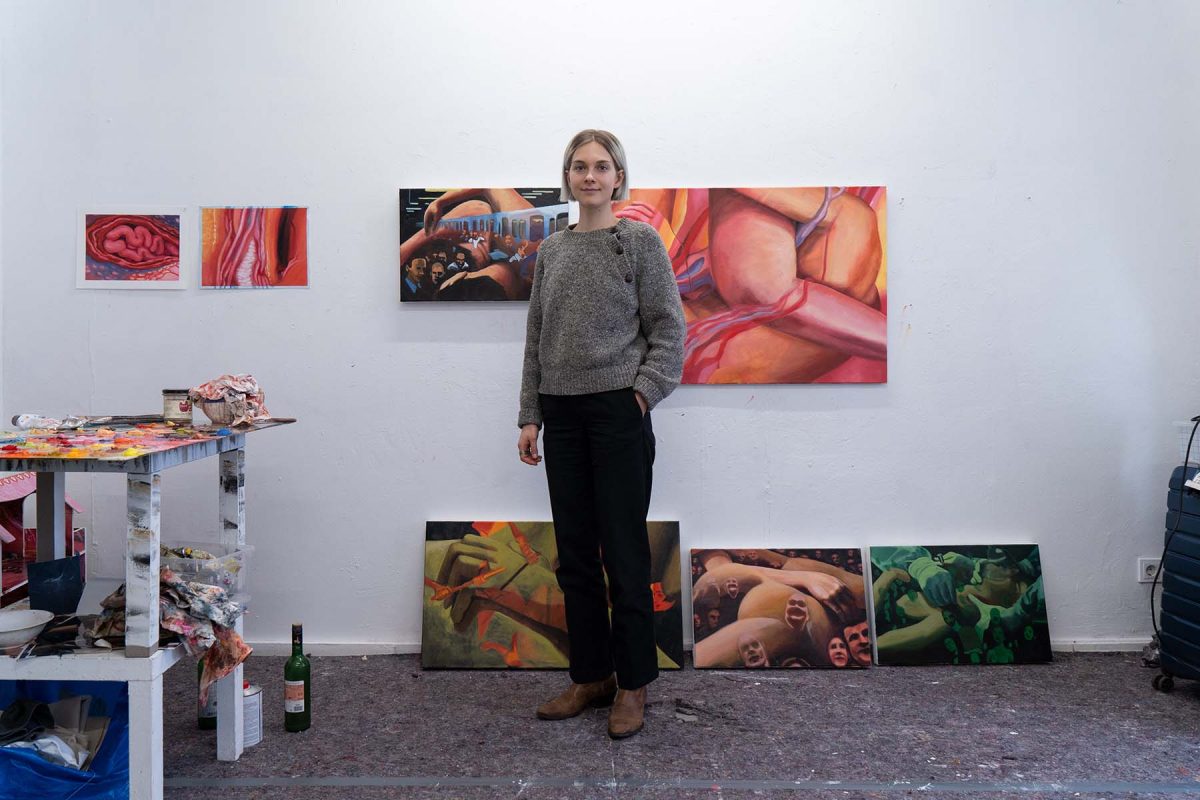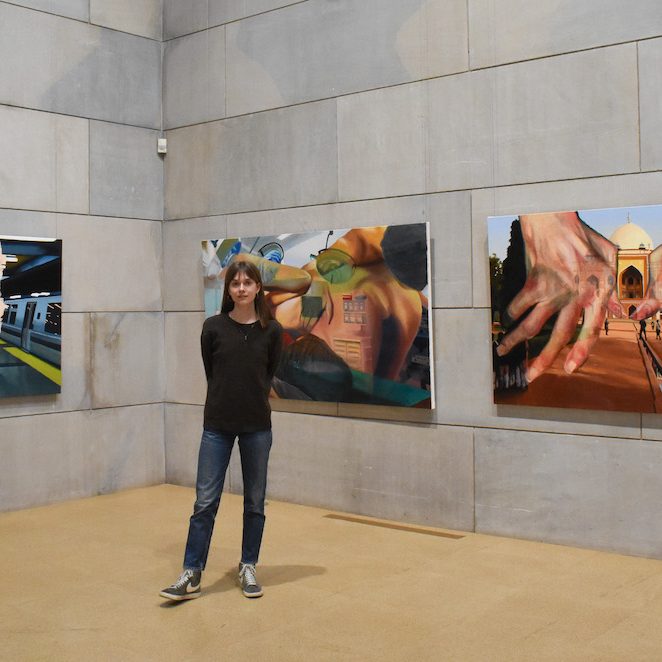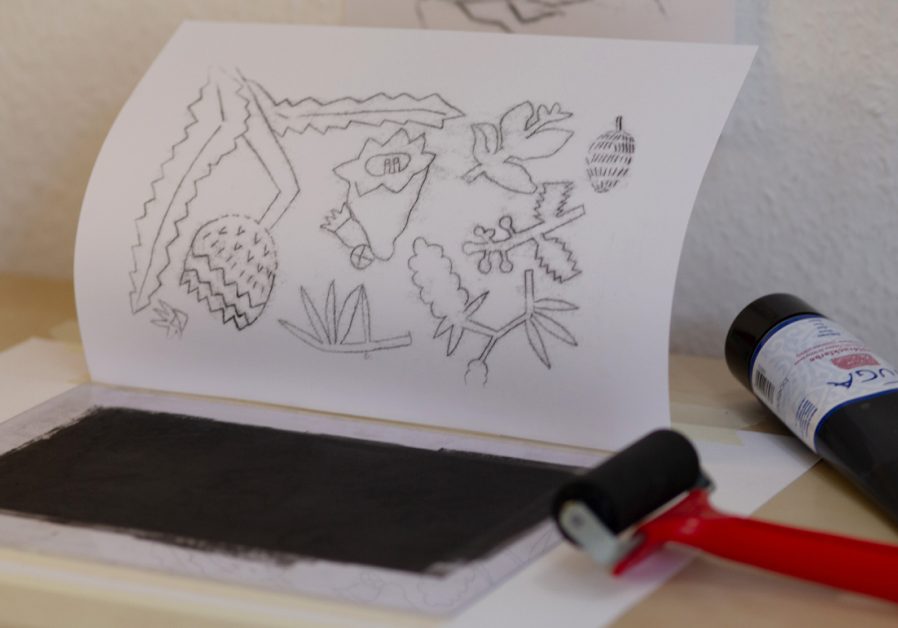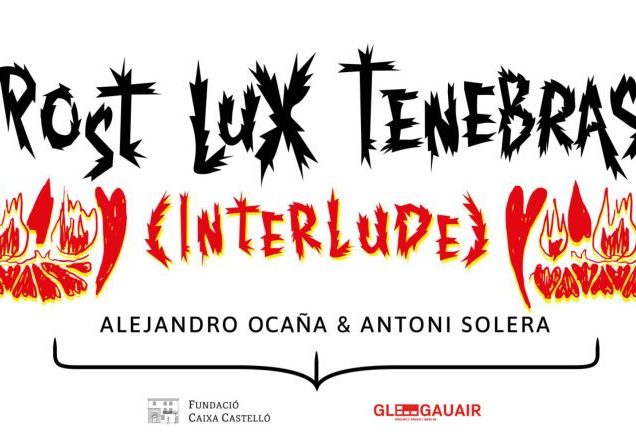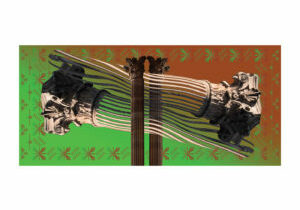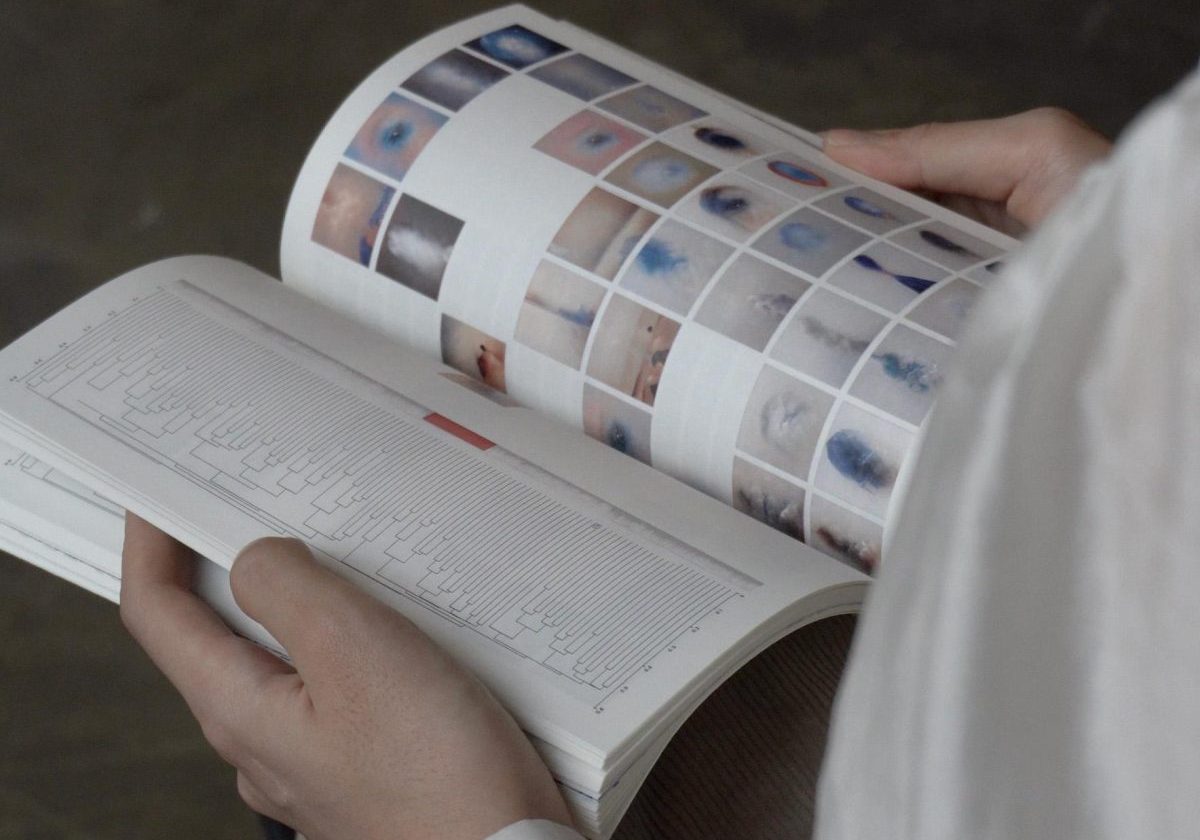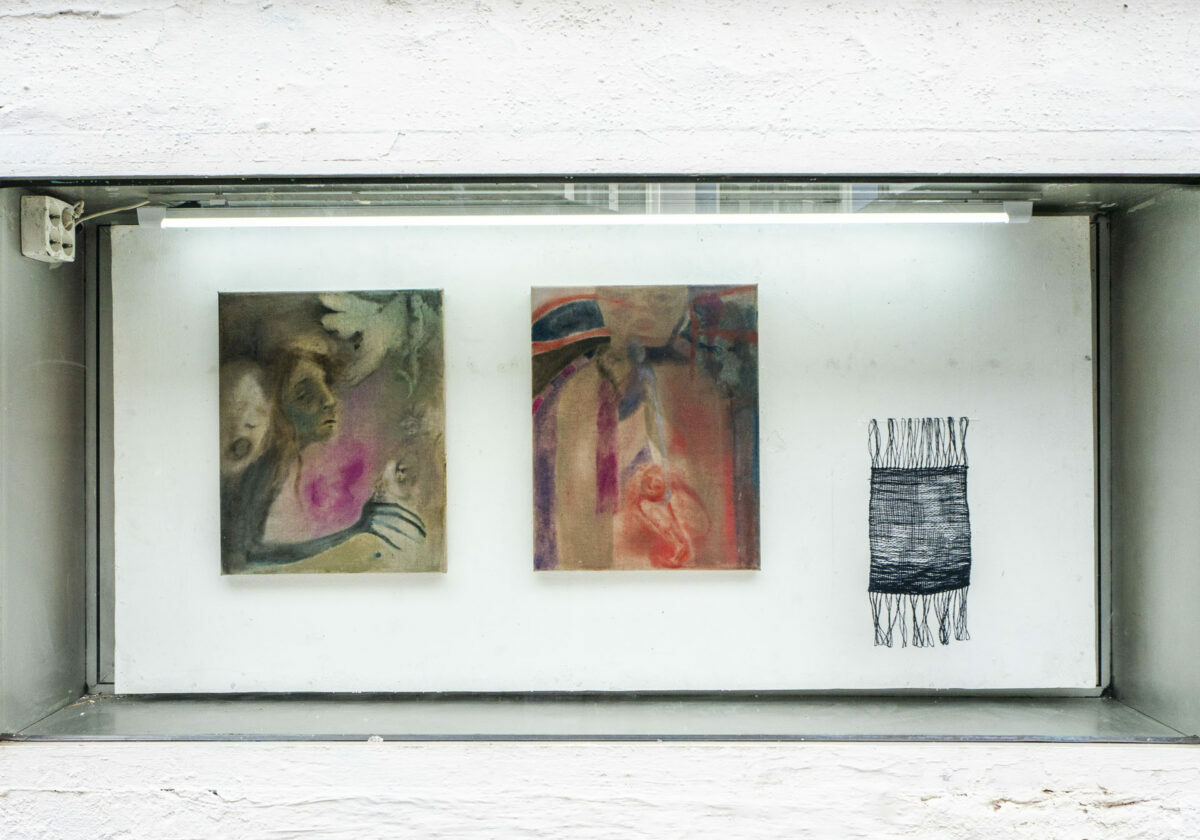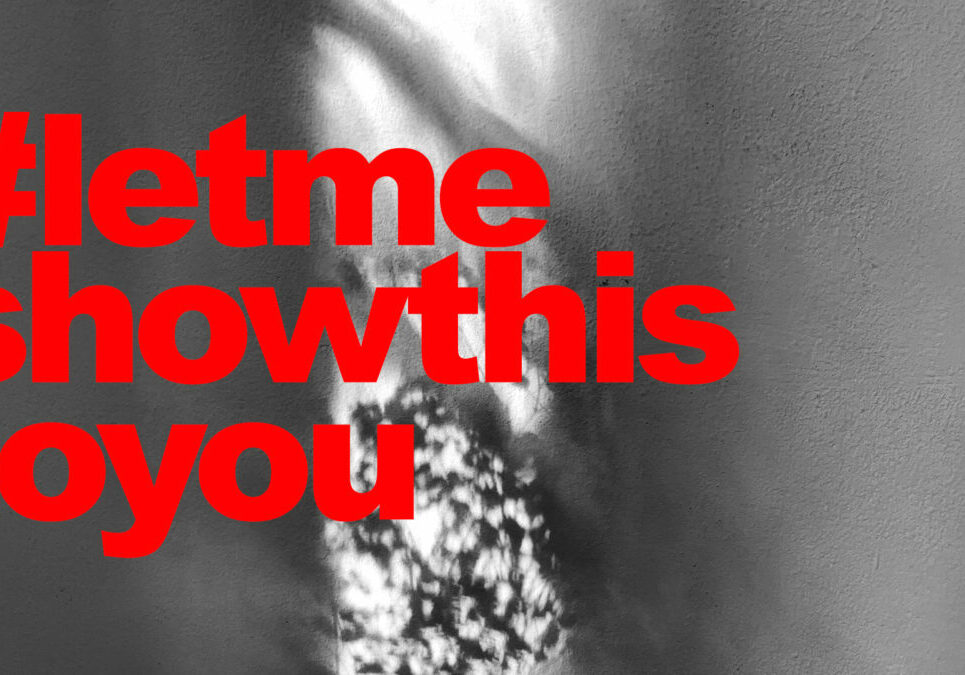Meet the Artist // Nina Criswell
Nina Criswell, a Lithuanian-American oil painter, explores the built environment’s relationship with body censorship. Her work challenges viewers to decipher the intertwined bodily and architectural forms, highlighting how societal systems compel bodies to conform.
During her residency at GlogauAIR, Criswell plans to further investigate this theme through oil paintings that dissect how urban spaces influence and constrain the pleasure-seeking body. Her aim is to reveal the presence of desire and pleasure within communal settings, offering layered compositions that depict the coexistence of public conformity and private intimacy.
How would you describe your practice as an artist?
My name is Nina Criswell, I grew up mostly in California, and then studied art and computer science on the East Coast, and then right after that I came to Berlin, and have been working in architecture, but also still doing some painting, so that’s what brought me here, to do some more painting in Berlin.
I guess I would describe my practice as consisting mostly of oil painting, but I’ve also done some work in some coding projects, and obviously architecture plays a big role in how I think about my work, and what I’m interested in.
In terms of painting, it’s mostly been a process of first doing a lot of archiving, of images that I see, that I take personally on the street, with people in my life. Also film is a big inspiration for me, so I like saving film shots that I enjoy, and then the painting part has usually been this process of finding ways in which to layer these forms together in a way that is interesting to me, or says something about our embodied experience.

I think my work has changed some in the past couple of years, with my interests, I used to only paint architectural spaces, and environments devoid of any people, and I was interested in the traces that bodies leave in spaces, the histories that these spaces carry, the ways in which they cater to the public sphere versus private, intimate settings. I realized that what I was really interested in, and afraid to tackle, was just the body itself, and how the body interacts with architectural spaces, but also how bodies relate to one another.
And so lately, especially in the work I’ve been doing here, I’ve been thinking about how we engage with our bodies both in this very private, intimate experience of sex, or of any kind of intimacy in that way, physical intimacy, and how that changes when we’re then exposed to the public sphere, and how the environments that we’re in dictate how we behave. We’re taught to behave a certain way in public, we’re then left to our own devices to experiment with our bodies in the private space, and I do think that there, or I’ve seen similarities, at least in my personal experience of public spaces and crowds especially, being very intimidating and scary at times, and yet also there’s this sense of comfort of being around other human beings and having this shared engagement with that space. And so relating that to my personal experiences of intimacy and sex, and how it has this connotation of violence and also intimacy.
So I guess that’s all a long-winded way of saying that I am just curious about how we’re taught to behave differently, how our bodies engage with spaces, whether it’s in the public or the private sphere, and how maybe those clashes can be brought to the surface, or how maybe it’s more similar than not.
Is there something that inspires your work?
I think I am inspired by dance. Even though it’s not really something that I ever did, my identical twin sister is a dancer, and I’ve had so many conversations with her about how she has taught her body to react to others, and how she has this deep intunement with the way that her body is moving in a space, or on a dance floor, or whatever it may be, and that was always fascinating to me as someone who has always felt very disengaged from my body and wanting to have as little connection to it as possible.
I think my other main inspiration is, or something that informs my practice now, is medicine. My mom’s a doctor. She was always bringing home photos of her arthritis patients to me when I was a kid, and I always had that fascination with the grotesque and this curiosity for how the body worked. So again, the ways in which the body was exposed to me growing up and in terms of other artists.
I’ve always had this admiration for American painters of the 50s and 60s, like Edward Hopper, and a couple months ago I went to this exhibit of Christina Quarles, who is this American painter who is doing these incredible surrealist paintings. Her work really inspires me, as I’ve wanted to kind of go more into the realm of abstraction.
Do you have any memorable anecdotes or stories from your artistic journey that had an impact on you?
I was at this school where they would just kind of give you materials and say to do whatever you wanted and just let your creativity run free. It was never about copying and doing still life or anything more traditional. I signed up to do this art exhibition where with a couple other students you’re given a semester and you’re supposed to produce this final work and then show it.
I had procrastinated and not really done anything for it and then two weeks before the deadline I had this idea, this fully formed painting in my head and I wanted it to be as big as I could possibly make it. So I went to the art supply store and found the largest canvas I could find and then came to school every morning at six in the morning. Then all of a sudden after two weeks it was done and it was just this large painting of my bedroom.
It was a really minimal color palette of these warm tones. I think it was the first time where I realized how just the sheer scale of it felt really powerful and I really relished that feeling of empowerment that I could just make something that was so big that you had to look at it and you had to think about it and you had to be surrounded by it. Since then, I only made huge paintings pretty much because I just loved that feeling of power and control.

How did your artistic journey begin?
It was right before I finished high school and then I went to college and I was planning on just studying math but then I ended up doing a double concentration which a lot of people do in the U.S. where you graduate with two bachelor’s degrees.
So I did art and computer science as a way of having both but that was, you know… I had never thought about studying art before that point. So I guess that’s where it began.
How do you see yourself in the contemporary art world? How do you see your work fitting there?
I think I struggle to see myself in the contemporary art world because my paintings are more figurative and I think that figurative painting is having a little bit of a comeback but I still feel… or I worry that sometimes my painting style is too traditional, quote-unquote. And so I think that the way in which I’ve been able to kind of break out of that mold a little bit is the experimentation that I’ve been doing with AI. I think as with any industry nowadays we’ve latched on to AI and the mid-journey and how it has implications for everything nowadays.
I do think that the contemporary art world has been so focused on what it does for the art world, the potential implications it can have on ownership of imagery. I see it as the way in which I’ve engaged with training the AIs to kind of create these weird imaginations that I’m curious about and then kind of integrating that into my work through this layering process has made me feel more relevant I think than I did in the past. I think a big part of the contemporary art world today is trying to figure out what the artist’s role is , in this digital revolution.
I don’t really like that term but to what extent do we let this technology inform the art practice or serve as a tool versus serve as the guiding principle? I think that finding that balance is going to be a big source of debate in the future and now.
Do you think the city of Berlin is having an impact on your production?
I’ve been in Berlin for about a year and a half now. it definitely had a huge impact on me. As I said, I used to be very disengaged from my body. I think coming to Berlin and very quickly being in the clubbing environment a lot, as with so many people coming to Berlin, it was this shiny new toy and I was so excited.
Every weekend just being in rooms of semi-naked people all close but yet you have this respectful space that you’re given to move. , I was so fascinated by it, going into these clubs at night and being surrounded by all these naked people and seeing the beauty of everyone moving together in this way.
Then I would leave and it’s early in the morning and you’re on the train and there’s these crowds of people that are doing these similar kinds of rhythms but at a much more subdued and slow pace. It was just so comical. I think that was when I really started to think about wanting to just paint bodies and limbs and how they coincide and bump into each other.
How is this residency having an influence in your production? How is living with other artists influencing your work?
I think it’s been the other artists here most importantly that helped guide this shift in my work. Especially with Camilla next door who seems to also have this obsession with the body and the grotesque. The two of us went to the Museum for Medical History in Berlin together and there were all these organs and jars and we both have had this fascination. Also her work has been a big inspiration for me. So many other artists here have been thinking about these same kinds of ideas. I think the other artists have definitely helped guide me in that direction.
What influenced your decision to come to GlogauAIR?
I decided to apply to GlogauAIR because I was really missing painting.
I was working full time in an architecture firm here and really enjoying that. But on the other hand I also felt like there was something missing and I didn’t have the space that I needed to make art. Oil painting requires a lot of space, time and resources.
I missed being around artists from when I was in school where you’d share a studio and just always be peering around to see what everyone else was doing and giving them comments, getting comments back, that collaborative part of it.
